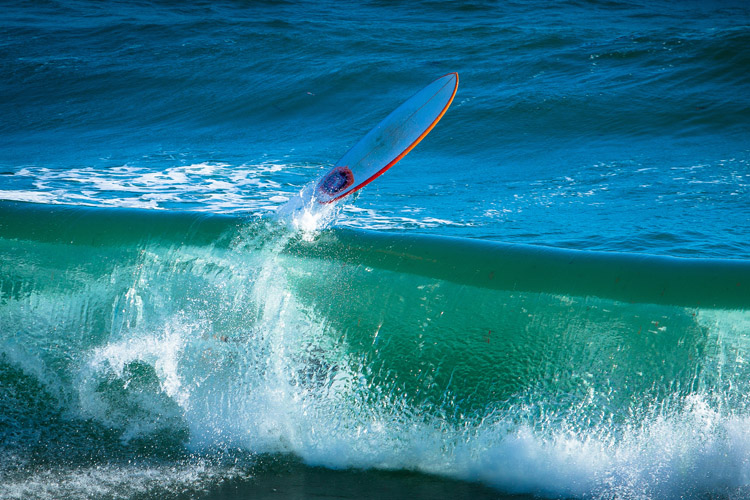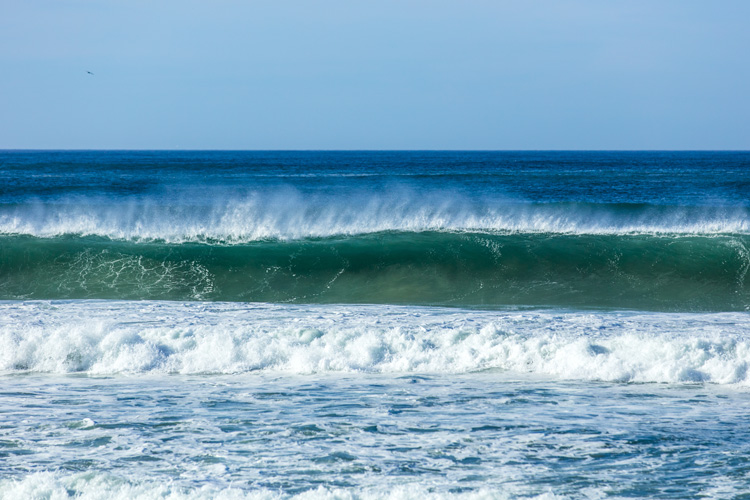In surfing, a closeout wave is a wave that breaks all at once, abruptly from end to end, and doesn't allow surfers to ride it because it doesn't offer a non-vertical wall.
In other words, closeout waves are not good for surfing, and they tend to appear more frequently on beach breaks and low tides with extremely shallow waters.
Although they look like they're about to form a tube, they collapse at once. And that is not a surfing wave at all - it's a nightmare.
A common mistake by surfing beginners is to paddle into all waves, even when some of them are unsurfable, closeout waves.
It is possible to catch a closeout wave without wiping out. However, luckily, the surfer will only be able to ride forward, toward the beach, instead of riding it down the line to the left or the right.
At some spots - for example, Pipeline (Hawaii), Supertubos (Portugal), and Jeffreys Bay (South African) - a quality wave ride may end up with a closeout section.

Read the Wave
The only lesson a surfer can get while in a lineup on a closeout session is to learn to pop up fast and try to ride it straight to the beach without falling off the board.
Because swells are not linear, one can get a closeout wave every ten perfect rollers.
That is why it is so important to know how to read a wave and to observe if it shows a declining crest line, also known as "shoulder."
Having that skill will enable you to determine if a wave on the horizon will shut down like a guillotine or peel smoothly down the line.
Waves that fold over all at once can be dangerous and cause injuries, especially if your bones hit the ocean floor after going over the falls.
But they can also put an end to a surfboard's life in a matter of seconds.
Note to self: if it's closing out, don't paddle out - wait for the ideal or right conditions to go surfing unless you're an experienced bodyboarder or bodysurfer.
For an in-depth look, discover why waves break and scan the four types of breaking waves.
